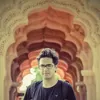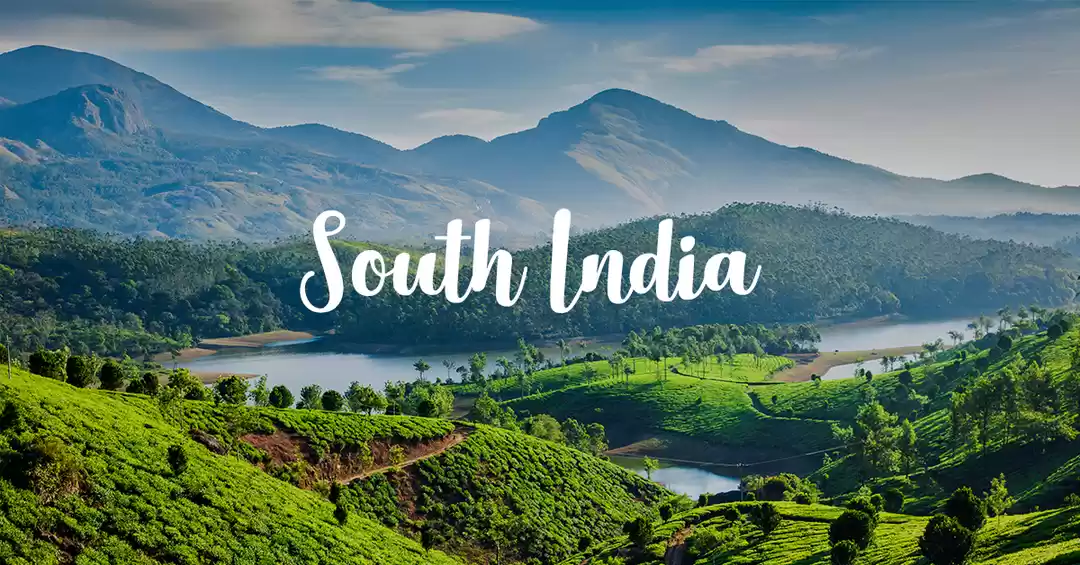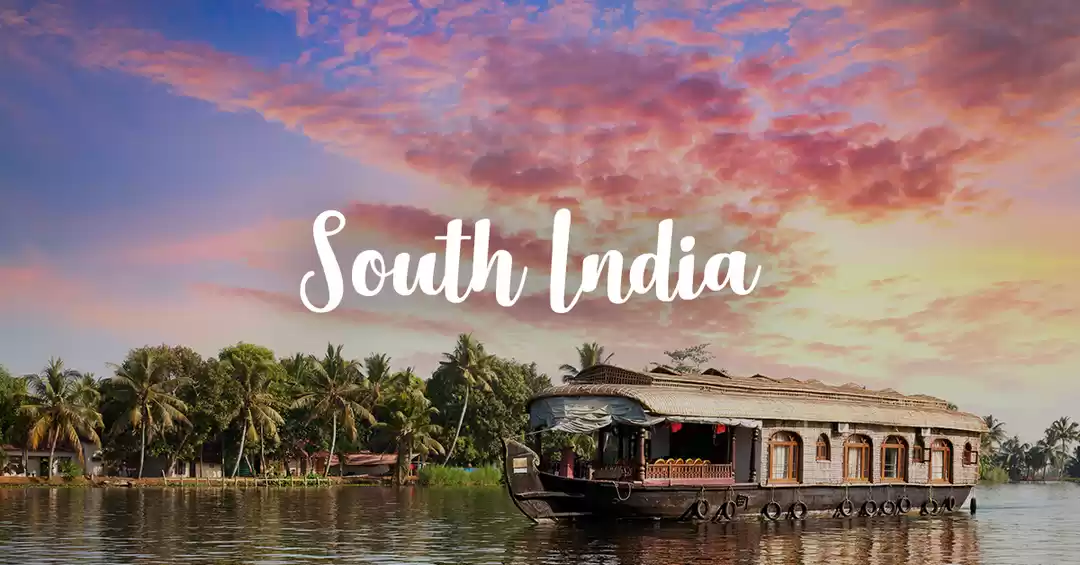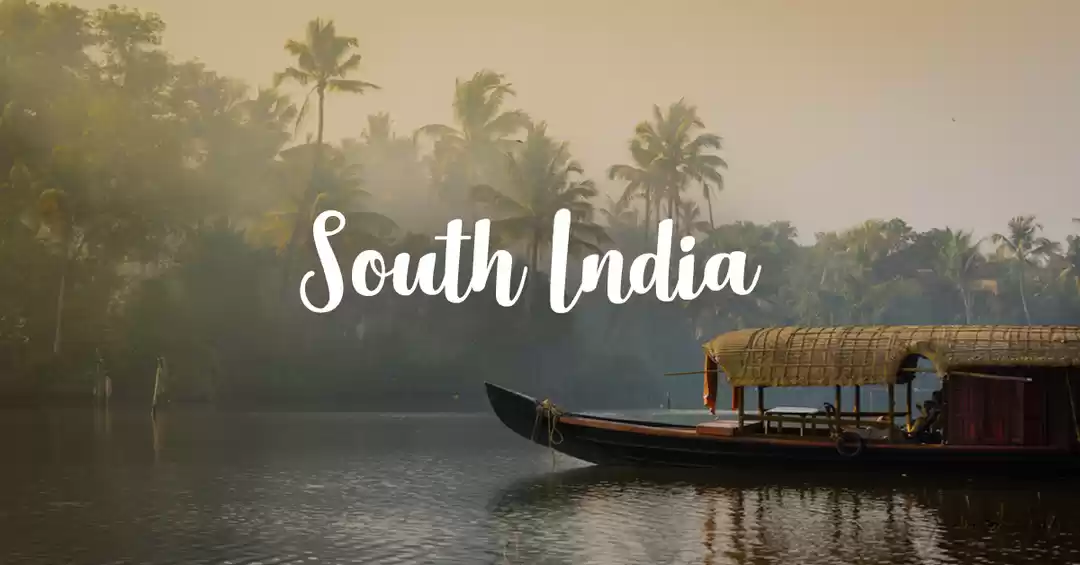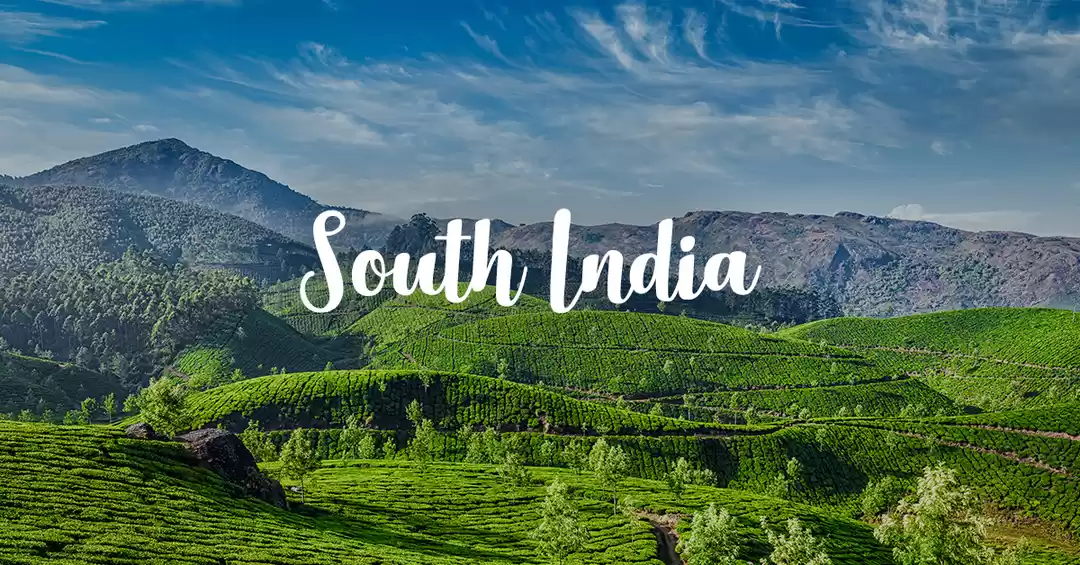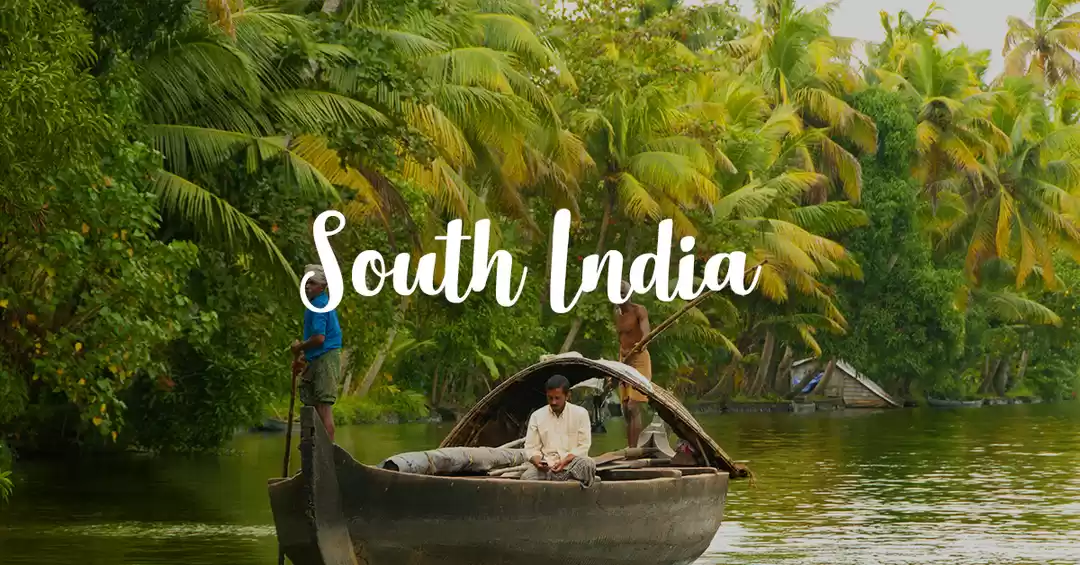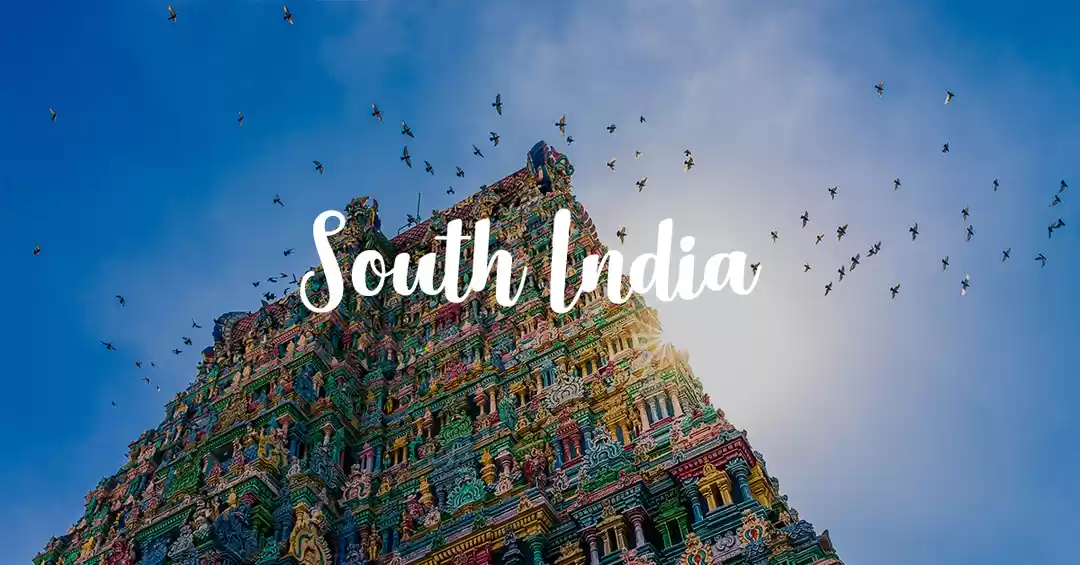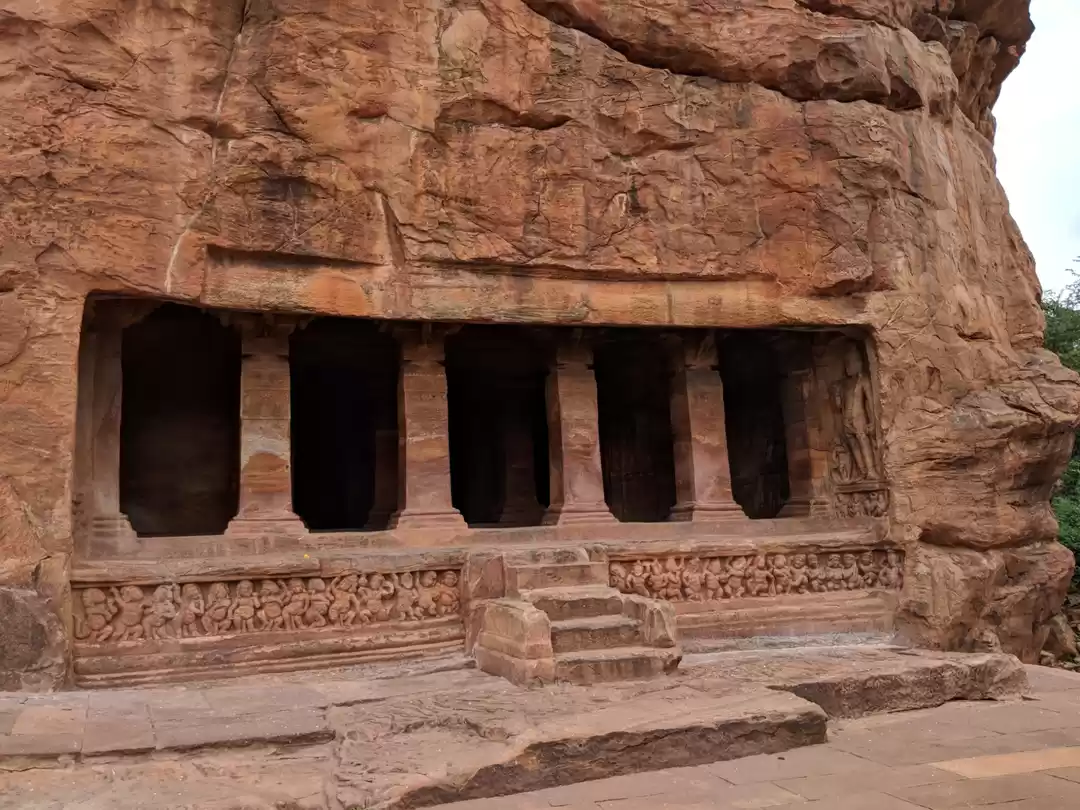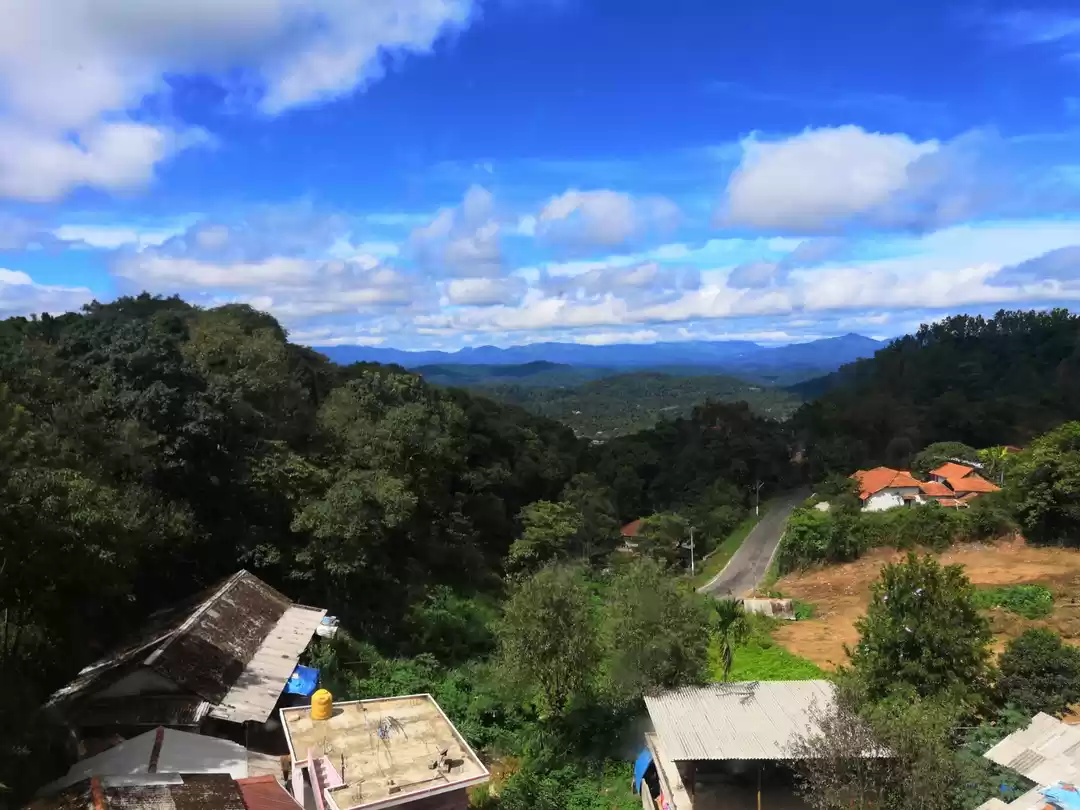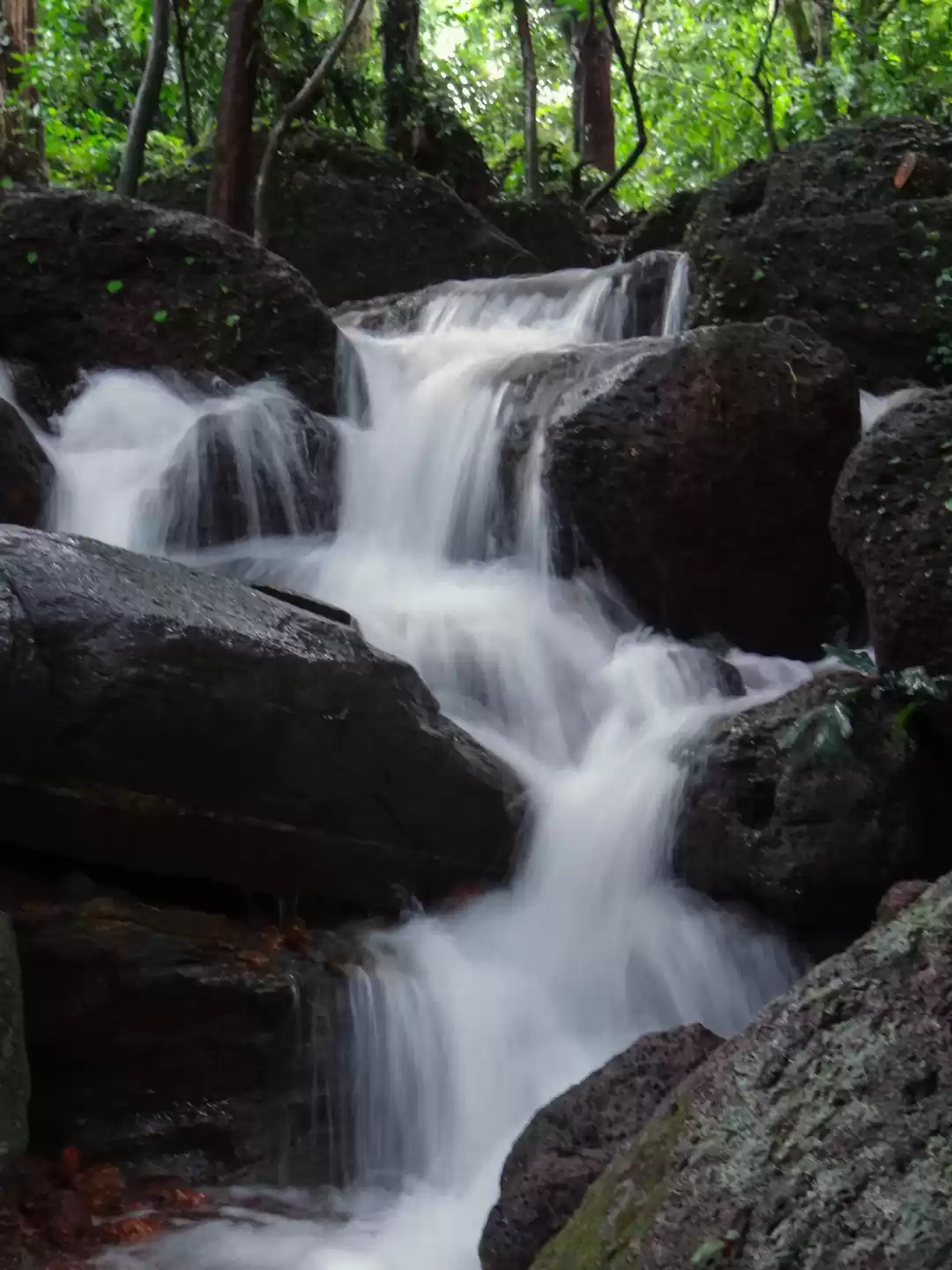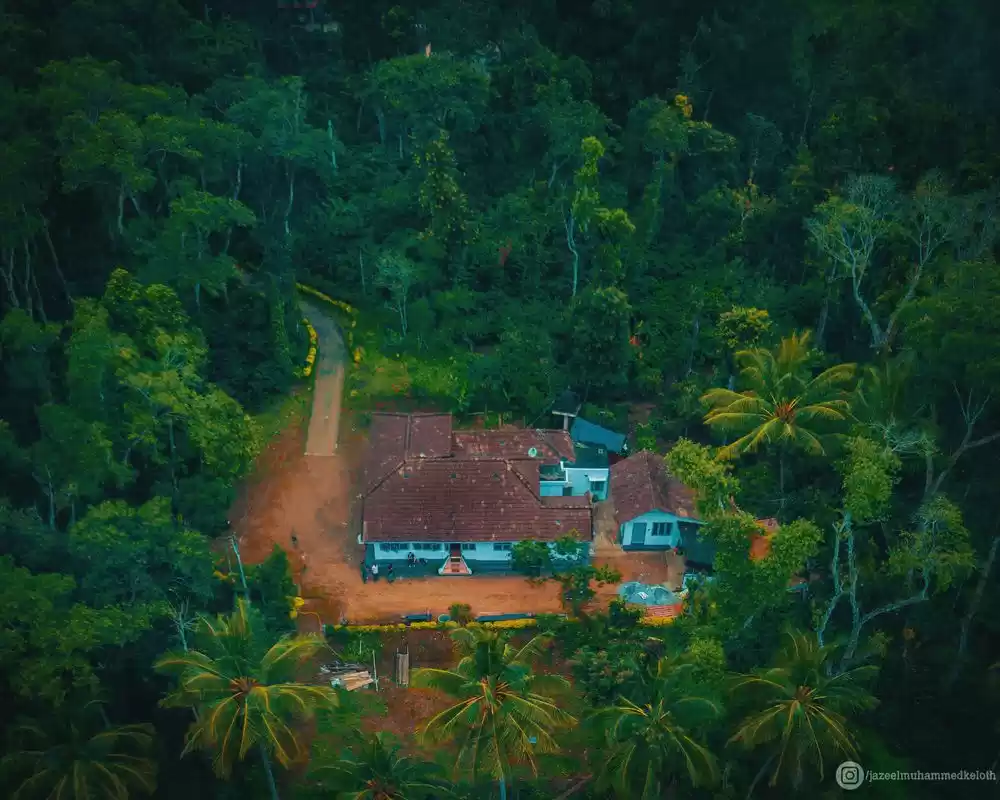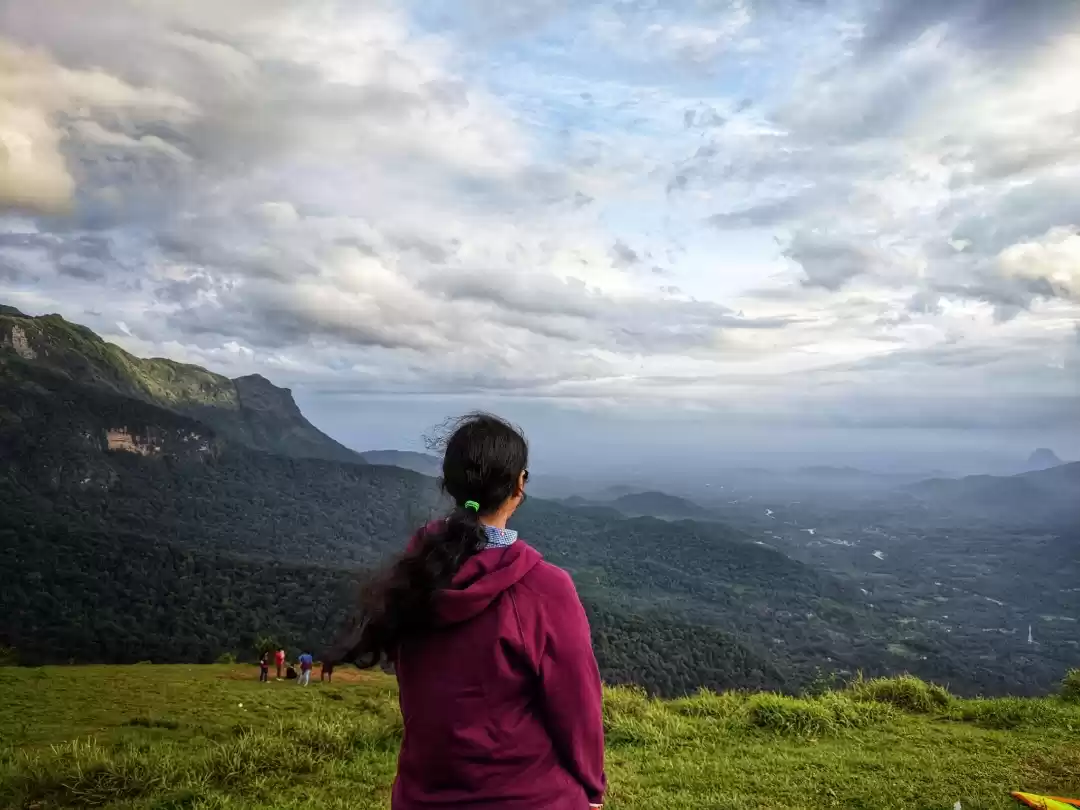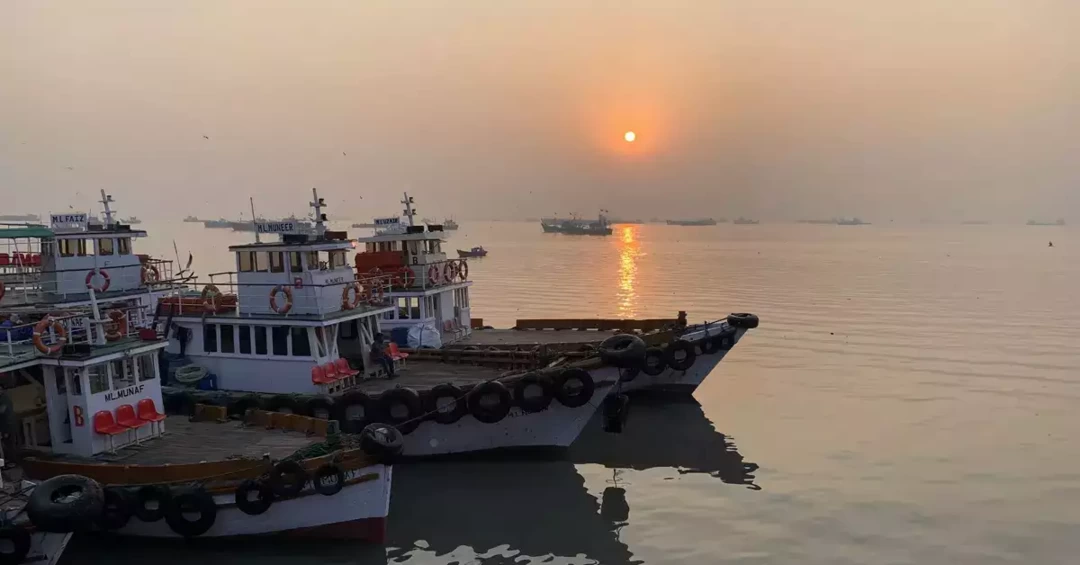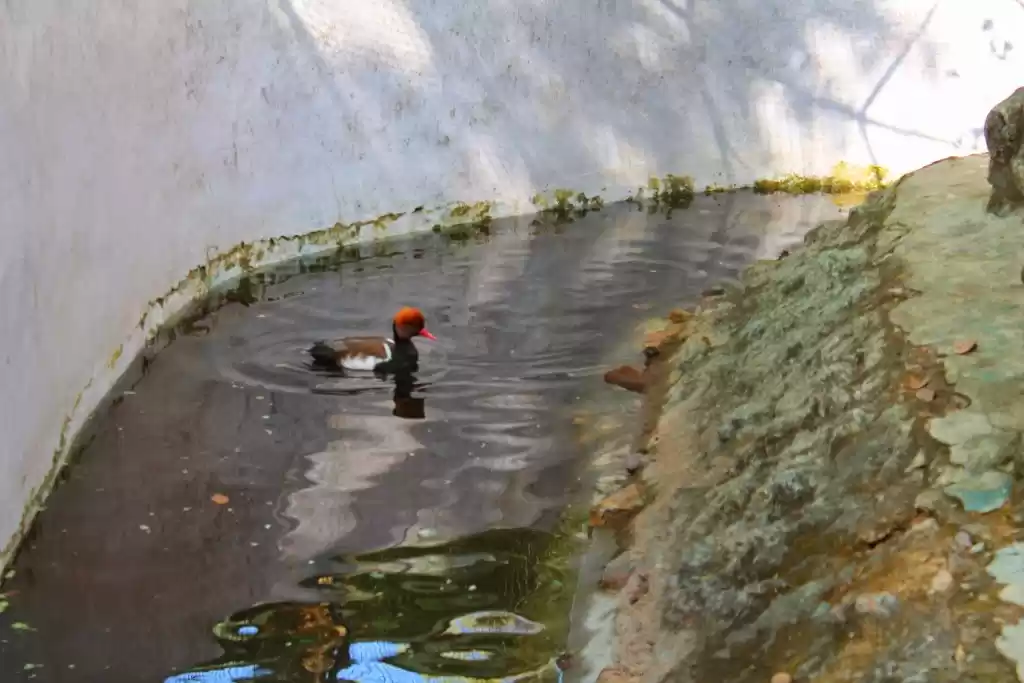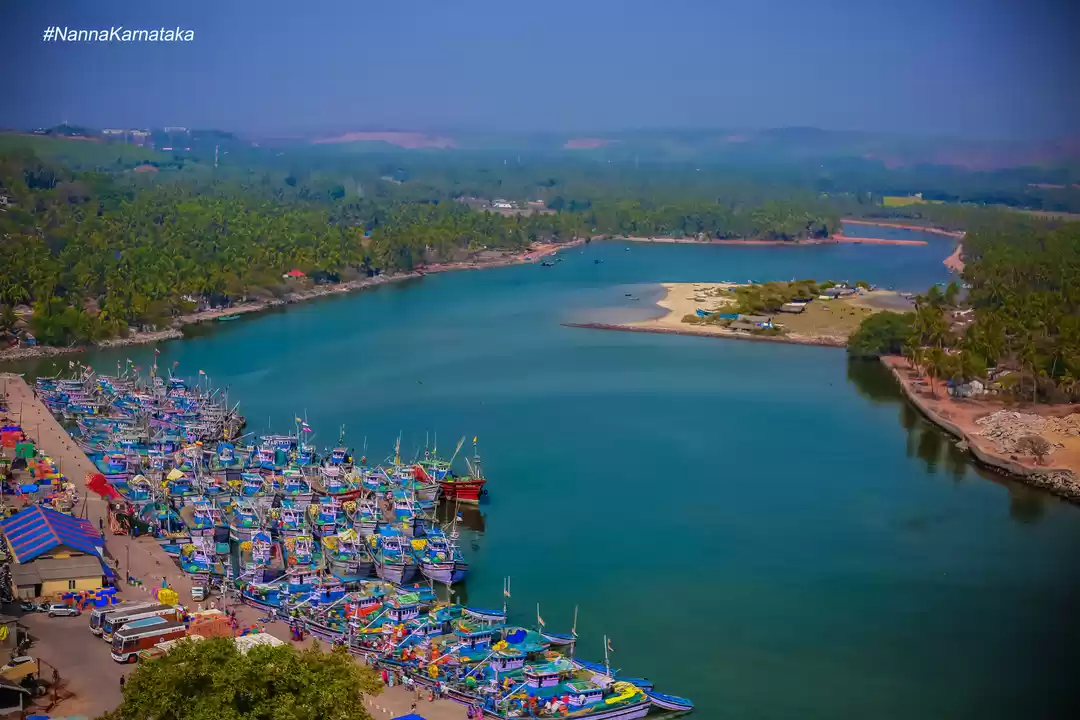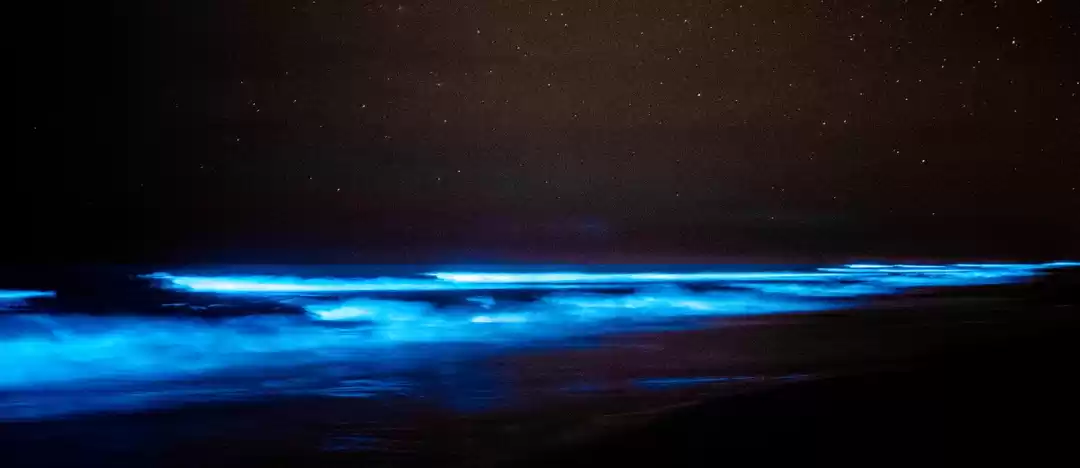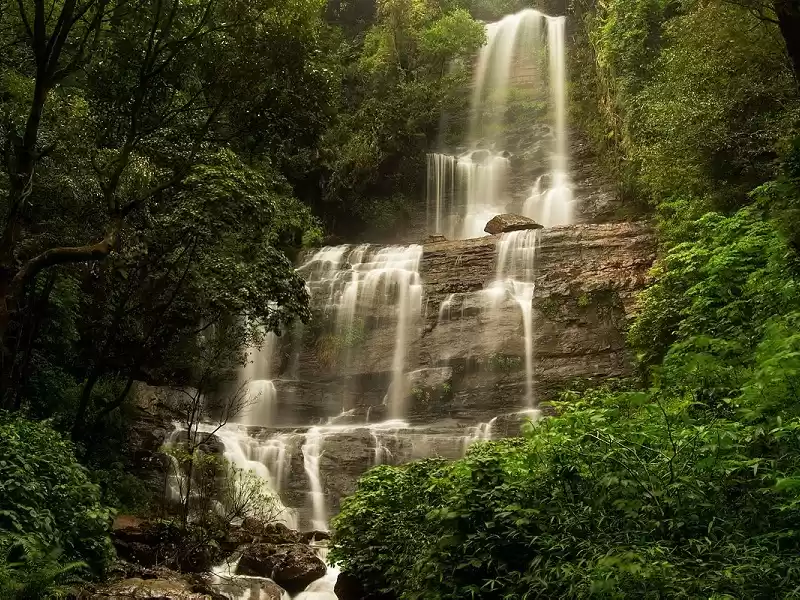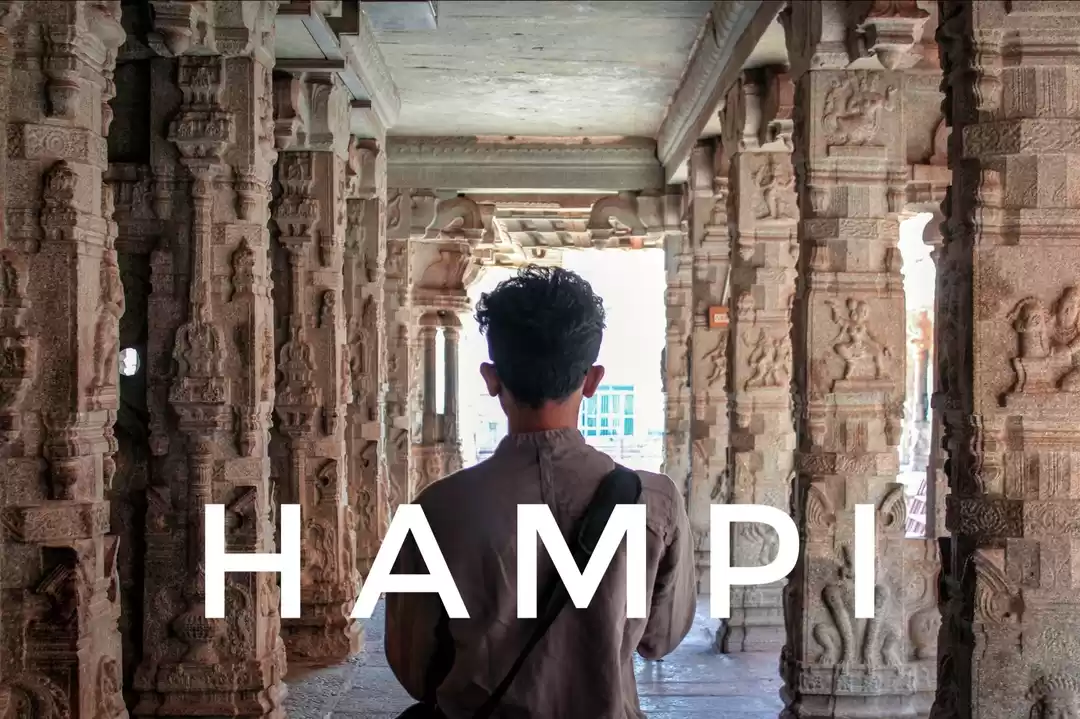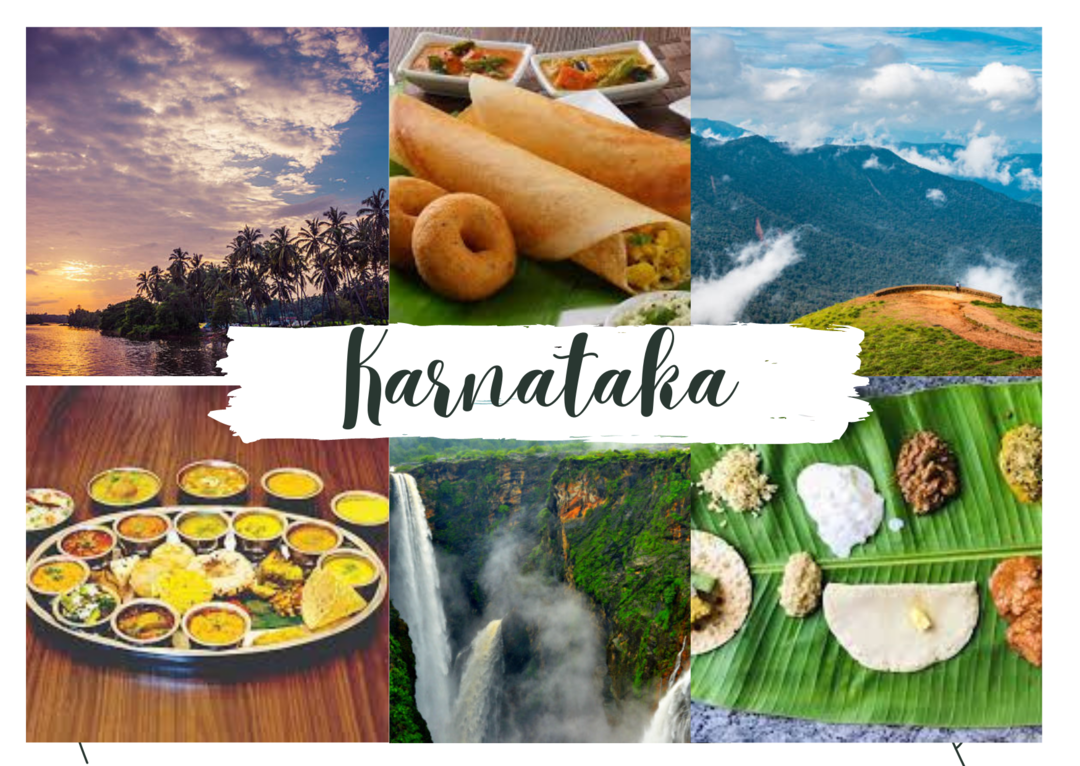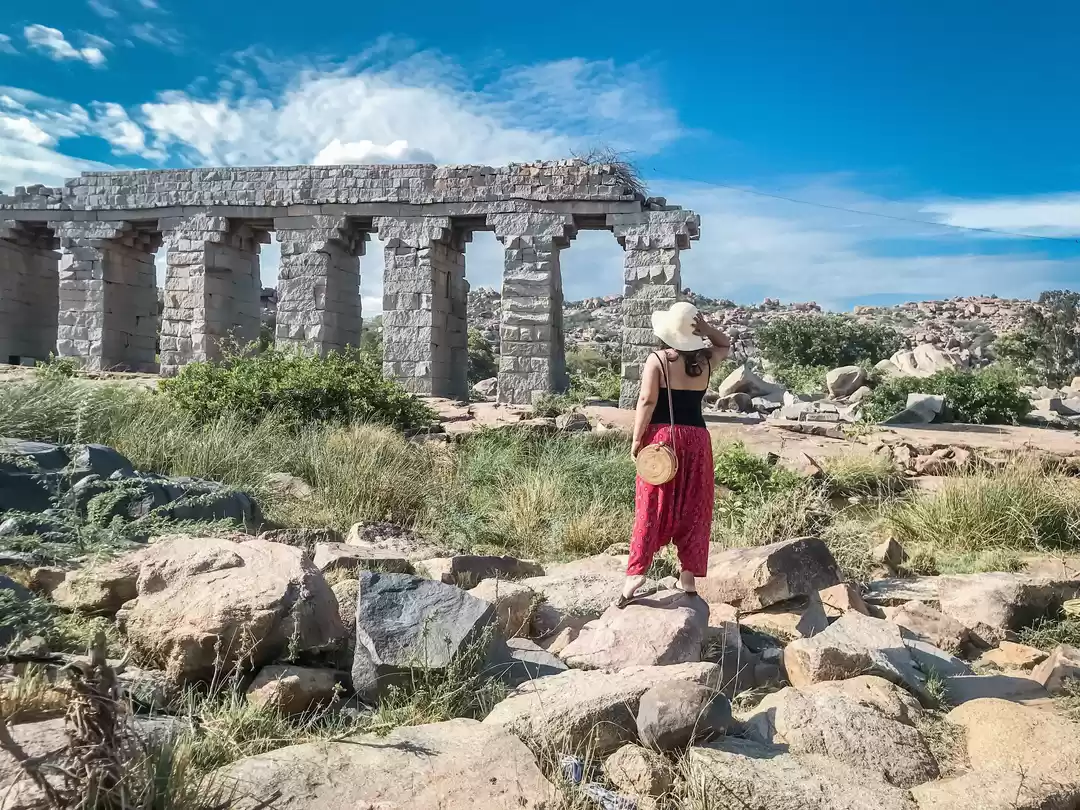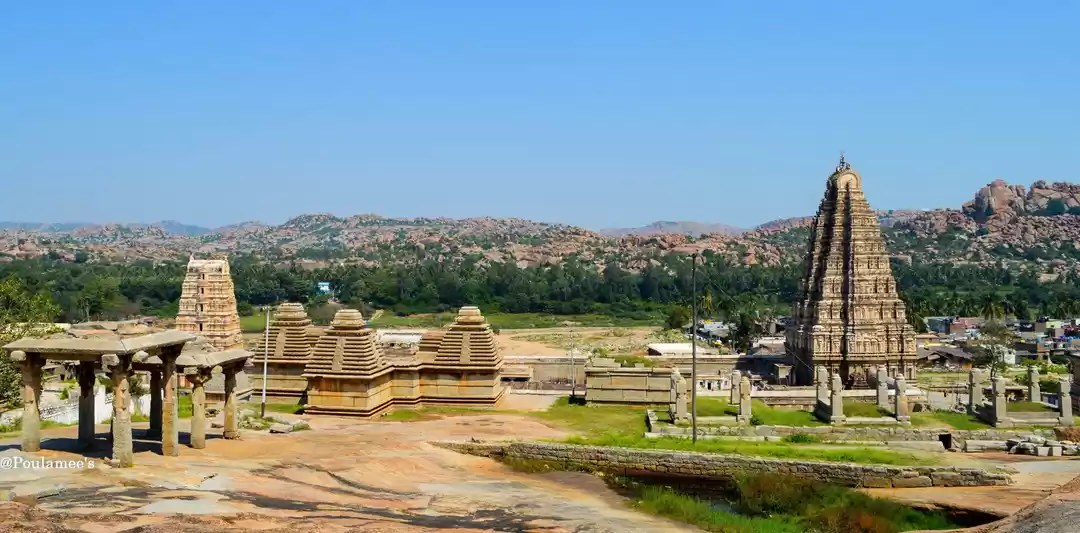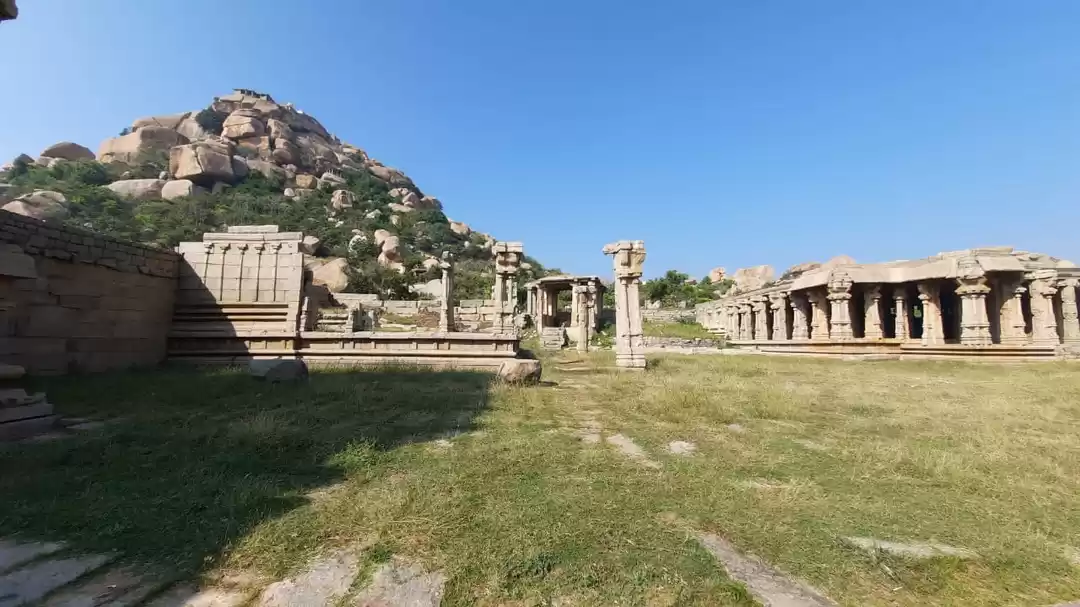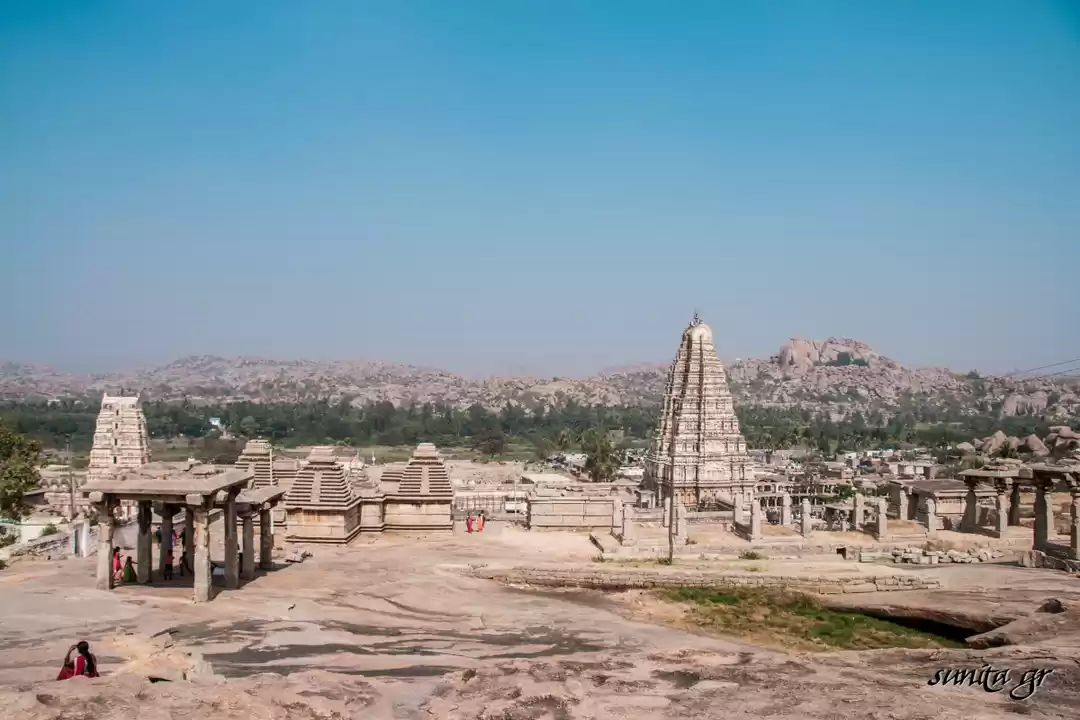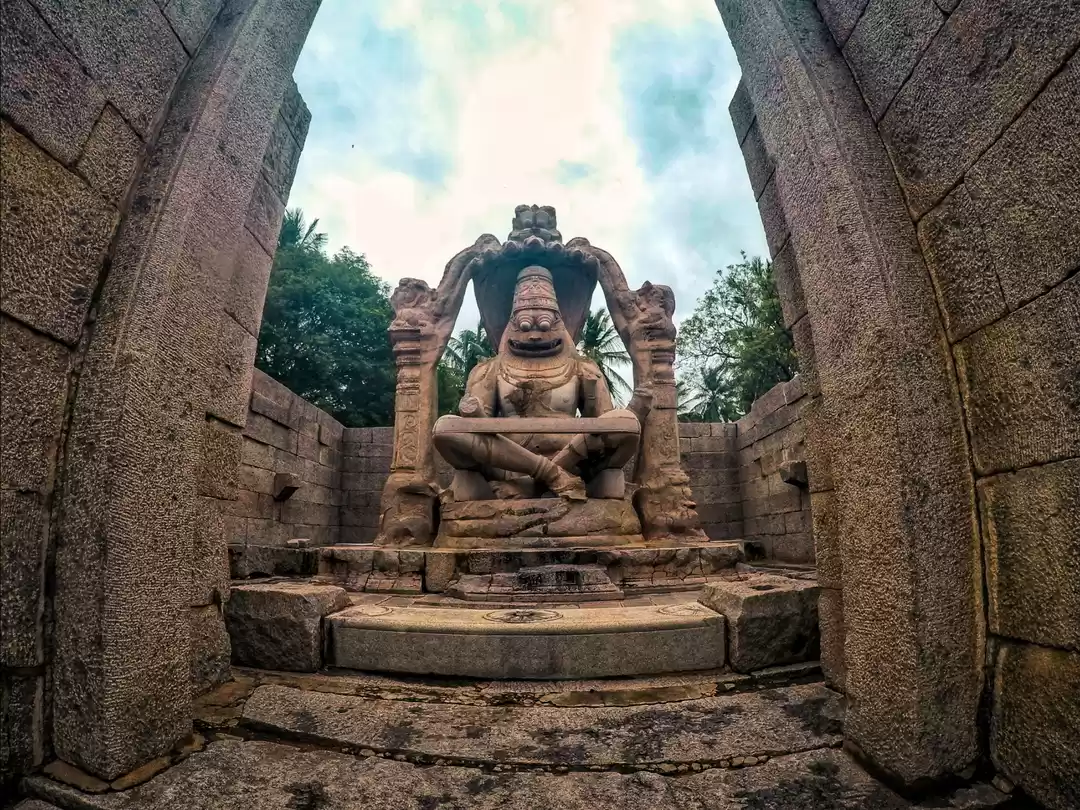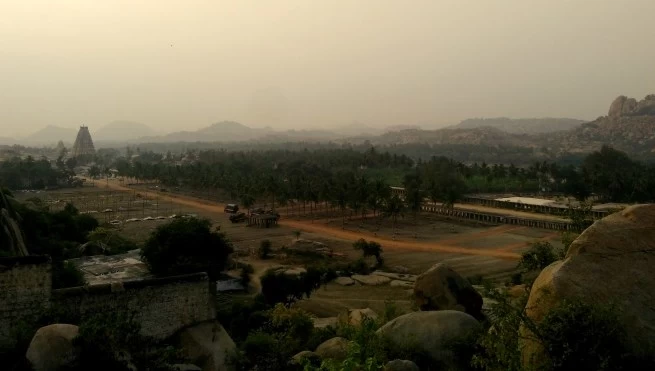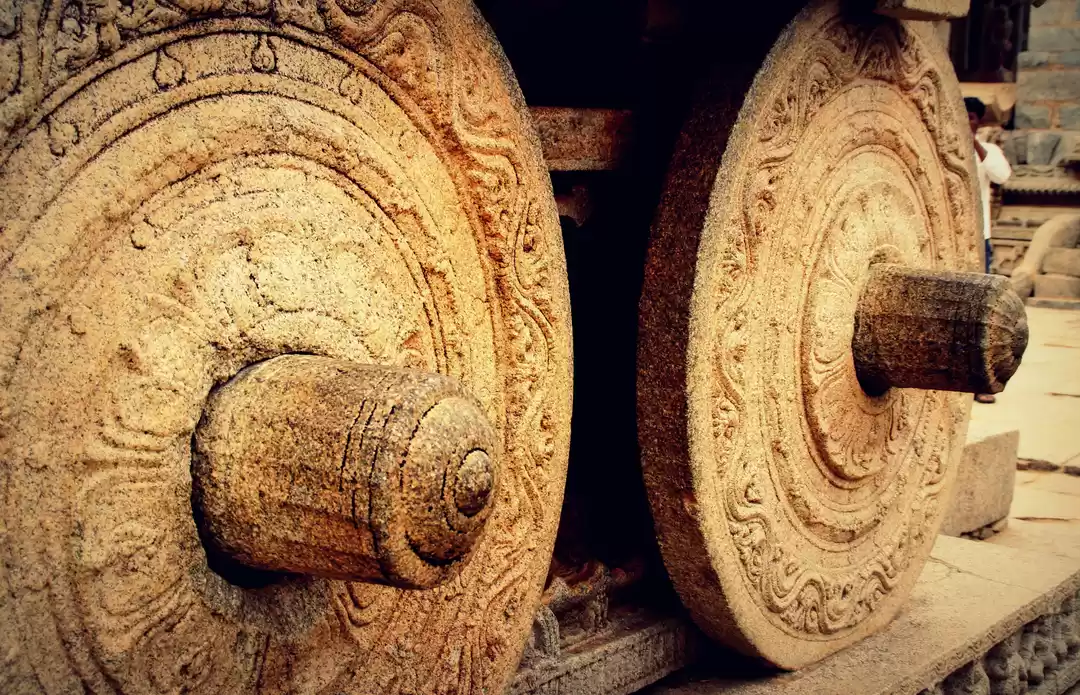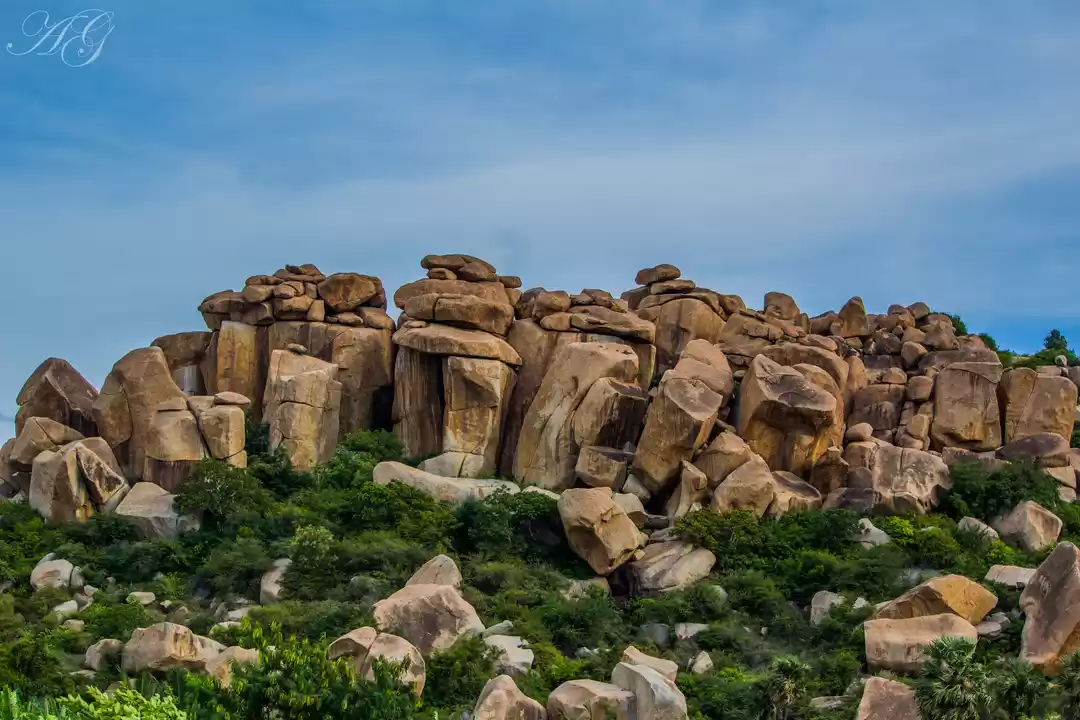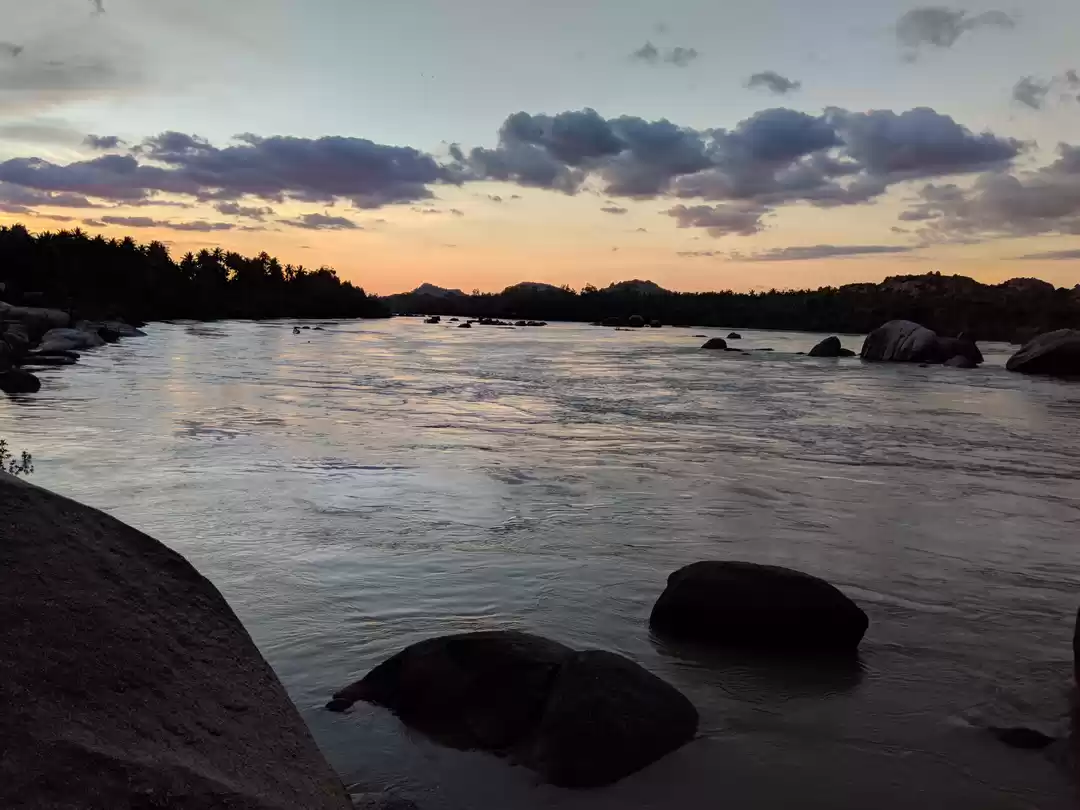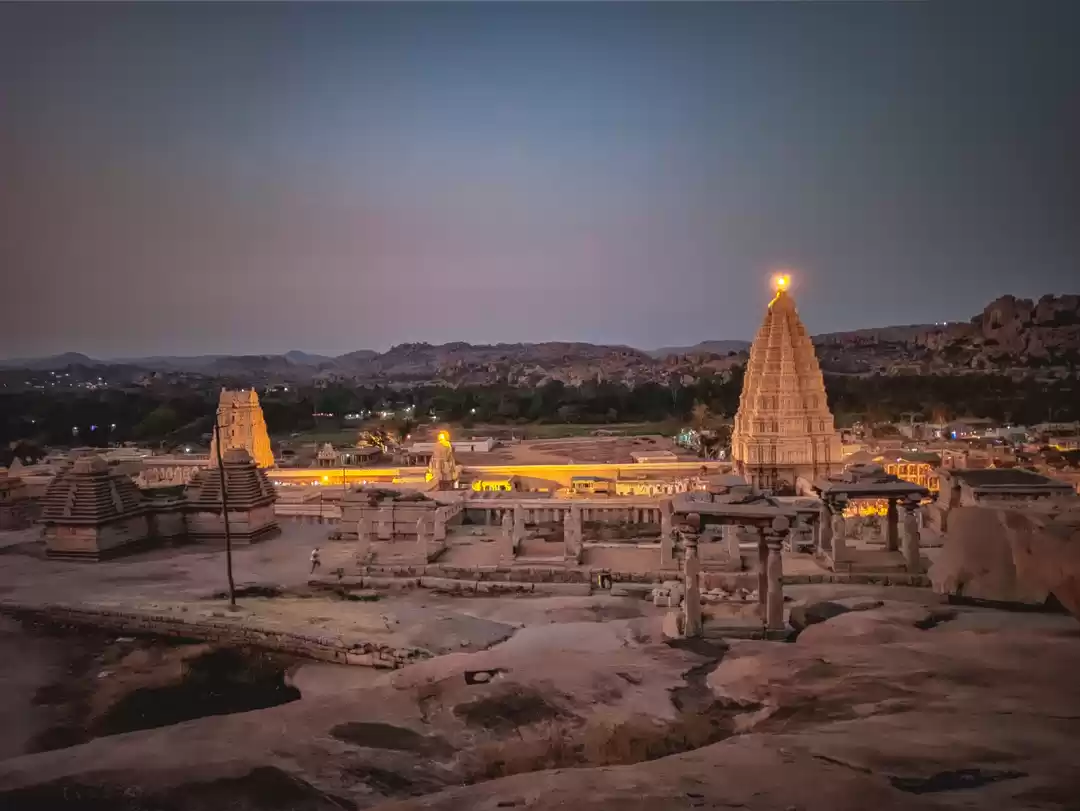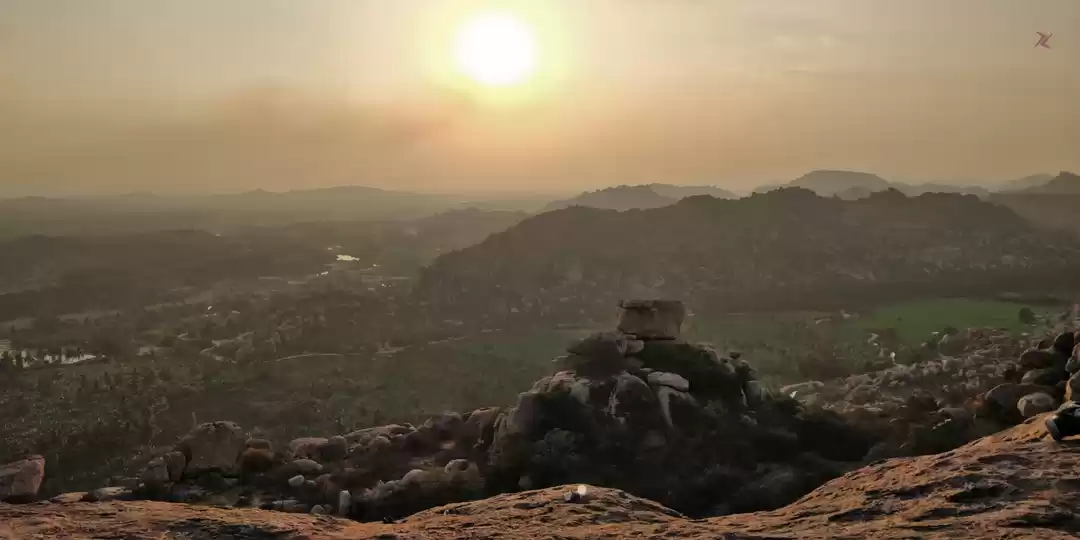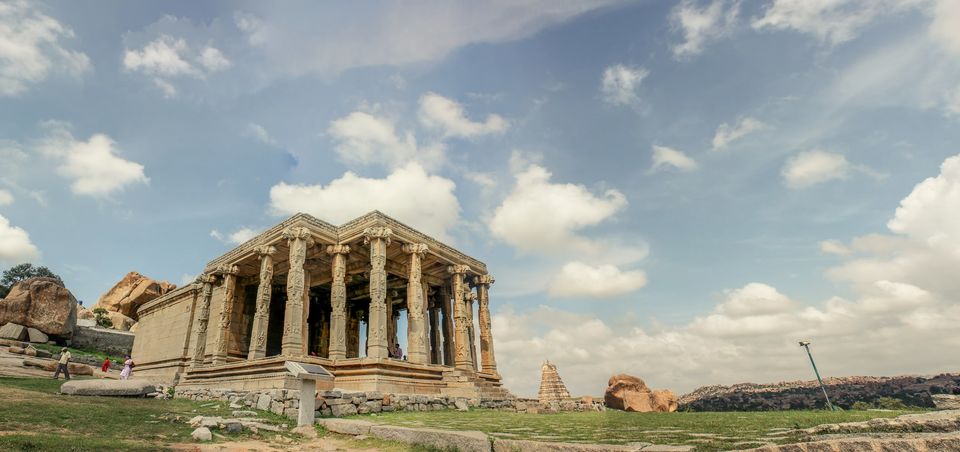



Hampi was the capital city of the medieval Vijaynagar Empire which ruled large parts of South India from 1336 to 1646 AD. In around 1500 Vijaynagar had 500,000 inhabitants, probably making it the second largest city in the world after Peking-Beijing and twice the size of Paris back then. The ruins are now a UNESCO World Heritage Site. Also, it is believed that Hampi in its earlier avatar of thousands of years ago (roughly at around 4,000 B.C.) was the city of Kishkinda. As many of you would know, Sugriva and his brother Bali (the monkey men in Ramayan) were the rulers of this city. Hanuman is also believed to have been born at this place itself. Today, Hampi is majorly a tourist attraction. Jindal Steel has a steel plant nearby and the area around Hospet and Bellary is now growing as an industrial hub.
Vijaynagar Dynasty rules over India for 3 centuries. It is a history full of wars with Bahamani and other muslim rulers of northern Deccan, collectively said as Deccan sultanates.

The Vijaynagar empire saw 4 different dynasties in power - Sangama Dynasty, Saluva Dynasty, Tuluva Dynasty and Aravidu Dynasty. The most famous king whom you might have heard about - Krishna Deva Raya belonged to the Tuluva Dynasty. I won't go into further details but if interested in knowing more, you would find this blogpost useful. In the years after 1565, after Vijaynagar empire lost a decisive battle at Talikota against the Deccan Sultanates, the Vijayanagara kingdom was reduced to a heap of uninhabitable ruins and the region was subjected to repeated invasions. It was re-discovered only in 1850-60s when the area came under the Madras Presidency of the British control. Alexander Greenlaw, a photographer and soldier of the British East India Company, whose 60 or so waxed-paper negatives from 1856 have miraculously survived was one of the few who contributed a lot to the revival of fate of Hampi. These masterpieces of early photography show the site before any clearing work took place. Even today, all the photos taken by ASI try to mimic the angles and vantages used by Alexander.
Before I start talking about all the monuments, here is a quick picture break.. that's me at the iconic stone chariot at the Vittala temple. It's probably the best sculpture you'll come across at Hampi or anywhere else for that matter. You should definitely get yourself this postcard shot from Hampi!

The best way to reach Hampi from Bangalore is via the train - Hampi Express (price close to Rs 1000, tickets can be booked at IRCTC). Hampi is close to 400km from Bangalore city and the train covers the distance overnight from both the directions. However, the train gets filled really fast during peak tourist seasons. So if you are not able to reserve train tickets, you can opt for a Sleeper bus (price close to Rs 1000, tickets are available on redBus) which is the next best thing, only drawback being that you'll have to endure Indian roads, there's no escaping that on a bus!
The tourist season peaks at around October-November because of Diwali holidays and then at December end because of New Year vacations. If you're interested in some adventure along with history, then Christmas week would be the best time as that's when a lot of rock climbers, most of them from outside India, come down to Hampi to have a ball!
Now, let me walk you through the places you'd encounter at Hampi. Here is the best map I could find online, make sure you get a high res copy of this on your phone (click on the map to get it) while you're traveling. There are too many places to cover and you can easily loose track of what else is to be covered unless you know them by name/location.
Evidently the ruins have been classified into 2 groups – Royal Center and Sacred Center. Also, there are a few sites on the other side of the river - they are mostly related associated with Ramayan and were already there before the Vijaynagar era. I infact didn't cover these sites across the river as I was told there wasn't much to seek apart from the historical significance of the place.
I took the Hampi Express to Hospet (closest station to Hampi – about 13km away). So, I arrived at Hampi on Sunday morning and left for Bangalore on Monday night. I couldn't get a confirmed ticket for the train, so I took the bus and reached Bangalore on Tuesday morning. It seemed like the right amount of time to cover all the places without having to rush through. I spent the sunday night, which also was the night of Diwali, at a hotel in Hospet. You can also get good hotels in Hampi itself, it would probably save you some time in travel from Hospet to Hampi and back.
So, back to Sunday morning.. I took a bus from Hospet to Hampi from the Hospet Bus Station, the frequency is pretty good and the fair is just Rs 13 whereas you'd have to pay close to Rs 300 for an Auto (tuk-tuk). Upon reaching Hampi Bus-Stop, the first thing you'll encounter is the auto drivers. I found taking an auto to be the best option as they also are government approved guides for the place and being locals, they know the place well. They have a fixed package to cover all the sites and you can spend an entire day on it. It was around 11 AM by the time I was getting the auto and after negotiating for about 5 minutes, I got a deal to cover whatever we can till sunset for Rs 600 which I think was good enough because the driver was doubling up as our guide.
We started our journey with Hemkuta hill, which though isn't shown on the map, but it's right at the Bus stand. The first monument we covered was the temple of Kadalekalu Ganesh. The Ganesh shrine there is shaped like an unsplit Bengal gram seed. Below is the view of the Hemkuta hill, you'd come across several smaller temples like the one in the picture scattered across the hill slopes of the hill. Also, this is the place where you should be at sunset, so you'd see me coming back to this place at sunset.

Our next stop was Krishna Temple which was built by the emperor Krishnadevaraya after military campaigns in Odisha. The carvings had intricate patterns and a part of the temple is currently under restoration. The 20+ feet high temple gate was a monolith. Below is the top of the structure at temple entrance, and shots of the pillars at the main temple complex.


The unique feature of big temples in Hampi is all of them have an area termed bazaar (Hindi for market) in front. These bazaars, now in ruins, were used to sell vegetables, puja offerings and other daily life items such as spices. Krishna Temple Bazaar was close to 500m long twin pillared enclosures made of stone for the vendors about 30m apart. Although mostly in ruins, you can still get good shots by including the rows of pillars in your composition. Below is what I managed to get when one lady was passing by in front of me.

From Krishna temple, we moved on towards Royal enclosure, leaving behind the rest of the sacred enclosure to be covered at sunset or next day. The next stop was Lakshmi Narasimha, the iconic statue of the fourth incarnation of Lord Vishnu.

Just besides this is a big 3 feet Shiv Linga of which 1 feet is under water. Both the sculptures are monoliths and are a testament to the Vijaynagar Art.

From here, we moved on to the underground Shiv Temple. It is at the beginning of the Royal enclosure and has quarters for noblemen and travelers next to it. It was mostly built as a temple for the visitors. This particular section of the royal enclosure was discovered by ASI in excavations of 1985-86.
We now move on to the main buildings of the royal enclosure. The first building we come across there is Lotus Palace which was meant for the queen. The palace is located right next to the King's palace but that's in complete ruins now. The structures at royal enclosure are built in Indo-Islamic style of architecture, so in all probability they were built in or after 15th century.

If the light is right, Lotus Palace can be a good place to get clicked as well! so below is one portait shot that really came out good.

If you'd spend sometime, you would love the intricacies of the architecture of the palace.

Besides the palace, you would be able to see the watch towers at the junctions of the fortifications. You can make out just by the looks of the structure that it is an addition that came with the influence of the Islamic kingdoms in adjoining regions.

From here, we take a reverse turn to cover the rest of the monuments left in the royal enclosure and move back towards the sacred enclosure. I'm not sharing all the pictures, but we covered Hazara Ram temple, Mahanavami Dibba, Stepped tanks and the queen's bath on our way back.
I was able to get this panoramic shot of the boulders behind the royal enclosure from one of the smaller un-named temples. You should definitely see this one full zoomed-in in my g+ album. There are amazing details in the photo!

One thing I forgot to mention is water! You'll need lots of it as Hampi can drain out energy from all the walking you'll have to do in bright sunlight. Make sure you always have a bottle in your backpack and refill it whenever you get a chance.
We reach back to the Hemkuta hills for the sunset and see off the auto driver with his Rs 600. It's now upto you to explore the rest of the temples in the sacred enclosure or rather watch the sunset at the hillslopes of the Hemkuta hills. I chose the latter and managed to get some good shots in the process as it was the golden hour (for photography).

What you see above is the Gopuram of the Virupaksha Temple, the biggest and oldest temple at Hampi. The Gopuram is the second highest in India, after the Gopuram of the Meenakshi temple in Madurai. Here are couple of more good shots of the Gopuram -


Below is a 360 degree shot of the view you get from the Hemkuta hillslopes. Again, the panorama is best viewed in full zoom position on the g+ album

Soon after, the scene changed to what's below and I moved ahead to explore the local markets and have dinner by the sides of the Tungabhadhra river.

You can find many cafes, all of which are well adapted to serve multiple cuisines, on either sides of the river for meals but since one can't cross the river after 6, so I didn't risk going on the other side as unlike others I had to return to Hospet. I went for Indian food hoping it to be the safest bet but it didn't turn out to be very good decision as the food was prepared in coconut oil, something I'm not very used to. After dinner, it was time to return to Hospet and end the day. I had some problems on the way back as there was no bus due to Diwali and the auto which I took, punctured it tire on the way back. All these were incidental issues and therefore can't be planned against.
Let's move on to the Day 2.
I started the 2nd day with a training session on rock climbing at the boulders of Hampi. You can signup for these sessions at a shop called the "Tom & Jerry Rock Climbing Joint". Tom and Jerry are actually the names of the 2 partners who run the shop. I went with Tom for my session from 8 to 11. The session was actually cut short by 1 hour because I wasn't able to cross the river in time in morning and the operators won't operate the boat unless there are enough people to fill all the seats. It's a shitty arrangement. Anyhow, you can see Tom spotting one of the members of our group in the pic below.

Here is a panoramic shot taken just after the one above, it will give you some idea of the terrain.

It was a very different experience for me as I haven't tried many adventure sports so far. Also, it was a fresh change from what I was expecting from Hampi - Temple ruins. So, that's me atop one of the boulders that I had just climbed!

After this session on bouldering got over, it was time for lunch! You should check out this place called "The laughing Buddha". It's a great place to chill out. the restaurant is built on the banks of the Tunghabhadra river and you can good view while you have your lunch. The food is good enough but not the best.
After lunch, we shopped for a while at the local market to get some souvenirs, I bought a pair of stone carved elephants for Rs 400 and they now would get placed in my living room, besides the book shelves.
With this we set out to explore the rest of the monuments, our main aim was to reach the Vitala temple. There are 2 ways to reaching the Vittala temple from the Virupaksha temple - to take an auto which takes you to the place via a 12km road route or you can walk/trek for 2 kms alongside the river and through the rocks. Being the adventurers we are, we took the 2nd route and covered several sites like the monolith bull, Matanga hill and a few temples on our way.
After almost 40 minutes of walking under the sun without water, we reached the Vittala temple. That's where I had got myself clicked at the Stone Chariot - the first photo above!

You would love this temple, it has been built in the most intricate manner by Krishnadevaraya. this temple too like the Krishna, Hazara Ram and Virupaksha temples had its own Bazaar in front of the temple complex. The road leading to the temple was once a market where the horses were traded. Even today we can see the ruins of the market on both the sides of the road. The temple contains the images of foreigners like Persians selling horses, like the one below.

This brought us to the end of our Hampi trip. It was time to go back, but I had time for one more quick trip to the Tunghabhadra Dam at Hospet. You might not know this, but Tunghabhadhra was earlier known as the Pampa river. Pampa in local language was called as Hampa as well, thus the town which was based on the banks of Pampa river came to be known as Hampa Pradesh and over time Hampa got anglicized as Hampi. This is how Hampi got its name - from the river Tunghabhadhra.
If you're staying back at Hospet, then I would recommend Hotel Malligi for meals and accommodation both. It's a 3 star hotel and I had dinner there before leaving for Bangalore. The food was very good and I liked the overall ambiance of the place. I took the 11 PM bus to Bangalore from Hospet and reached Bangalore at about 6.30 AM i.e. Tuesday morning which brought me to the end of the trip and end of this blog post as well.
Hampi is a place you should surely visit if you're interested in either of the following - History, Photography, Travel, Rock Climbing. Let me know if you have any questions through comments below, I'll be happy to answer..
I'll leave you with this photo of a member from my rock climbing group looking over the city of Hampi, you too be fascinated by it, I'm sure!


